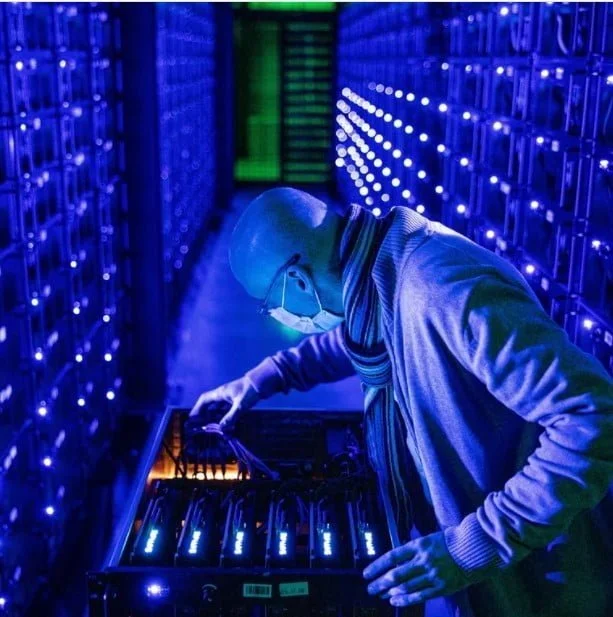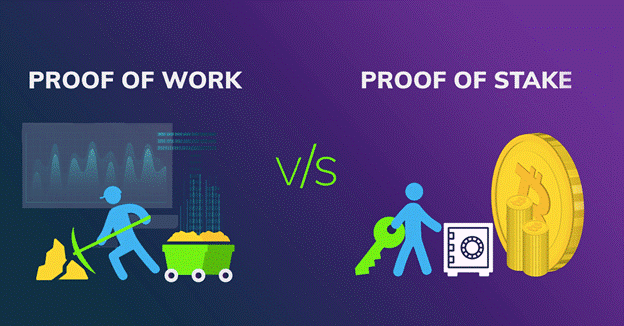If you want to hop on new NFT trends but are concerned about the effects of NFTs on the environment, we will try to address how NFT creation and minting affect our environment.

Then this article is what you need because we will be answering questions arising from how NFTs affect the environment.
And so, if you want to learn about NFTs and the environment, we advise you to read till the end.
How are NFTs created and minted
Before we talk about NFTs and their effects on the environment, you need to understand how NFTs are created and minted.

The reason why this is important is to clarify that it is not the NFTs themselves that are affecting the environment but how it is minted on the blockchain.
So how exactly are NFTs created and minted?
The process of creating NFTs is extremely power-intensive. Most NFTs are minted using a proof of work (PoW) method.
This method of minting uses massive amounts of electricity which is considered detrimental to the environment because of its ability to worsen climate change by adding to carbon dioxide emissions.
But why does the proof of work method consume so much energy?
To understand this, we need to know how the PoW minting happens.
Listing the NFT in the digital platform
Before you mint an NFT, you will need to choose a platform or marketplace for it to be listed.
There are so many online platforms you can use to create and sell an NFT. The following are the most popular NFT marketplace platforms:
- OpenSea
- Variable
- SuperRare
- Foundation
- Nifty Gateway
- Viv3
- BakerySwap
- Axie Marketplace
- NFT ShowRoom
While listing an NFT is not energy-consuming, the blockchain network of the NFT will determine how much power is required for the minting process.
Most of these marketplaces, like the OpenSea for example, host the NFTs on the Ethereum platform which uses a minting process called the proof of work.
Purchasing the NFT
After the NFTs have been listed on the marketplace, they are left there for interested users to purchase. The purchase of NFT is the real reason why they are minted for sale.
Storing or Transfering NFT
Once you have completed purchasing the NFT then you proceed to either store the NFT or transfer it to another user.
While storing the NFT does not consume any energy, transferring the NFT is another cycle since you have to repeat the same energy-consuming process as you’ve used for its minting for its transfer.
One may wonder how the mining process consumes energy. This is because only miners with the most computing prowess are likely to successfully solve complex math the quickest. This means miners must run a large amount of computing hardware thereby consuming a lot of electricity in the process.
Even though only one miner is chosen to validate each new block of transactions, a global network of miners competes to validate blocks of transactions, including NFTs transactions, requiring each participating miner to use a significant amount of electricity.
Read more on how NFTs are created and minted in this article.
How NFTs affect our environment
Now that you understand how the NFTs are created and minted. It is time to address the elephant in the room. How NFT affects our environment.
A website called Crypto art.wtf which was designed to calculate the rough energy use and environmental impact of NFTs, estimated that an average NFTs consume the same amount of power as an ordinary European Union resident’s month’s worth of electricity usage.
With marketplaces like OpenSea and SuperRare relying on the Ethereum Blockchain for transactions and minting of NFTs as we’ve earlier mentioned.
A study conducted by DigiConomist reveals that a single Ethereum transaction consumes the same amount of energy as an average US household spends in nine days. While the carbon footprint of a single Ethereum transaction equals that of 273, 985 VISA card transactions or watching YouTube for 20,603 hours.
That’s a whole lot to take in but let’s continue.
Coming to annual figures, the total electrical energy consumption of the Ethereum ecosystem is comparable to the national energy demands of the Netherlands, according to DigiConomist.
As Ether’s market value climbs and gas fee surges so also do the value of transactions on the Proof-of-work blockchain goes up. But it is hard to quantify the impact of NFTs on a piece-by-piece basis and that’s because the NFTs constitute only a tiny share of the global blockchain network.
On the other side, NFTs are at the moment witnessing a massive amount of growth, which means more energy consumption and carbon dioxide emissions, and the result of environmental impact is going up rapidly with each day.
How To Solve Impact on the environment.
To shed more light on NFT and the environment, you must know that a single NFT piece has a carbon emission footprint of about 211 kilograms, according to an Estimate by an individual researcher.
This is equivalent to flying for two hours, driving about a thousand kilometers in a petrol car, or using a laptop for three years.
Since we now understand that creating a digital art piece doesn’t take a lot of energy. And that it is the blockchain-linked activities such as minting, bidding, and transfer of ownership that consume the enormous share of the energy supply.
It is important to provide a solution to the problem it presents because more carbon emissions into the environment are bad if not worse.
To curb these, we have been presented with a few solutions to solving the environmental burden of NFTs. They are as follows:
Switching from proof of work to proof of stake
The first solution that we can use is switching from the proof-of-work blockchain architecture to a proof-of-stake system for verifying transactions.

The proof of stake system of minting is believed to be able to cut consumption and greenhouse gas emissions attributed to NFTs.
With a proof-of-stake method, miners will lock up a specific amount of cryptocurrency which allows them to confirm the next block on the blockchain. As a result, computer power becomes unnecessary and energy is limited.
But this is still a work in progress for Ethereum and is expected to happen in the second quarter of 2022.
Cardano and Solana, on the other hand, have already adopted the proof-of-stake blockchain system. This transition would ensure that Ethereum transactions become far less energy-intensive.
Adding one more blockchain layer to the existing blockchain technology
Another alternative recommended by experts is adding a “layer” on top of the existing blockchain.

To explain this simply, this will mean all trading business happens on the second layer of the blockchain, and when a deal is finalized, the parties switch to the first layer and authenticate the transaction on the blockchain.
A second layer will allow anyone to make transactions outside the blockchain and then process them in batches all at once in one big transaction on the blockchain.
There are various Layer 2 solutions for all sorts of blockchains such as Polygon, Immutable X, and Bitcoin Lightning network among others.
Although this is not a perfect solution to the environmental problems of NFTs, it can at least lessen the impact.
Using renewable energy for all blockchain purposes
The third solution is linking all blockchain activities to renewable energy sources like solar harvesting.

Renewable energy which is also referred to as clean energy comes from natural sources that are constantly replenished. For example, the wind and sunlight keep shining and blowing even though they depend on uncontrolled sources like weather and time.
It is believed that if NFTs depend on this clean energy they will consume less energy and as well reduce electricity usage, therefore, lessening its impact on the environment.
But in a world that still depends on fossil fuel energy, for a lot of things, the shift to a cleaner blockchain and greener NFTs will take a while to attain.
Conclusion
The NFTs are exploding and have disrupted a lot of things in our environment.
It is a hyped, novel, and exciting way of technology and it is pushing our minds to think outside the box and see differently how we verify and validate things.
Before the NFTs, selling homes, arts, music and so many other items required large paperwork and time. In other words, it was a nightmare of an experience.
But with the NFTs taking away the centralized authority and intermediary, and making transactions, authentication and verification between people become seamless. This has changed the world.
And even with its negative environmental impact on our world due to its minting on the blockchain. It shows no sign of stopping any time soon.
It is a crazy moment when we are getting our heads wrapped around what this new trend of NFT means.
But it is a trend we will all adapt to and although this excitement around it might dwindle. The NFTs impact on our environment will stick around for a long time.

